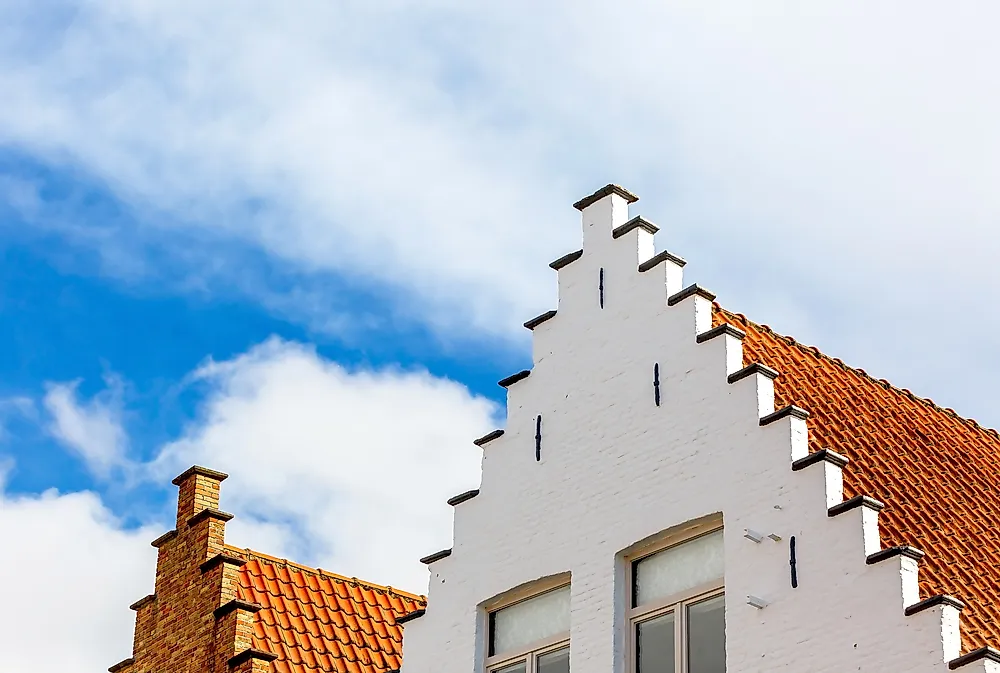The Culture Of Belgium

The Western European country of Belgium hosts a population of around 11,570,762 individuals. 75% of the population is represented by ethnic Belgians. The country has three official languages: Dutch, French, and German. Although Dutch (60%) and French (40%) are spoken by large sections of the population, German is spoken by only 1% of the population. Christianity is the religion of the majority in Belgium. About 50% of the population adheres to Roman Catholicism. A large section of the country’s residents (32.6%) do not believe in any religion.
Belgian Cuisine
The cuisine of Belgium is known for its significant regional variations. It also reflects the influences of French, German, and Dutch cuisines. Globally, Belgium is best known for waffles, chocolate, beer, and fries. Today, most Belgians have food that is also consumed in neighboring nations. Thus, Belgian cuisine usually refers to those dishes that have their origin in the country. Potatoes, grey shrimp, asparagus, leeks, Belgian endives, etc., are some of the common ingredients of the Belgium dishes. Moules-frites (cooked or steamed mussels with celery and onions, and served with potato fries) is often regarded as the national dish of the country. Carbonade flamande (a Belgian beef stew), Steak-frites (steak with french fries), Waterzooi (a chicken or fish stew), Filet américain (minced ground beef is eaten cold and raw), Boudin (a type of sausage), etc., are some of the other dishes consumed in Belgium. Despite its small size, Belgium produces about 1,132 different varieties of beers. Jenever, the country’s national spirit gave birth to the gin. The country is famed for its chocolates with over 2,000 chocolatiers operating in the country.
Belgian Literature And Art
As Belgium is a multilingual country, literature in the country has been produced in several languages with the two most prominent ones being French and Dutch. Literary works in German and regional languages like Walloon have also been produced in the country. Some of the most famous Belgian authors are Guido Gezelle, Jacques Brel, Paul van Ostaijen, Pierre Mertens, Amélie Nothomb, and others.
Belgium also has a long history of art that goes back to the Middle Ages. The monasteries in the country were the hub of productions in Carolingian art, Ottonian art, and later Romanesque Mosan art. During the Renaissance, Belgian artists produced some excellent works of art. Rubens, a Flemish (a Germanic ethnic group native to Flanders, Belgium) artist, is one of the influential artists of the Flemish Baroque tradition. Today, impressive museums in the country like The Royal Museum for Fine Arts in Antwerp and the Plantin-Moretus Museum protect and preserve the works of Belgian art and literature.
Performance Arts In Belgium
The musical heritage of Belgium is a diverse mix of the Walloon French-speaking, Flemish Dutch-speaking, German, and immigrant music traditions. The Franco-Flemish style dominated Belgium’s music scene in the 15th and 16th centuries. Some of the most famous musicians of the time were Orlando di Lasso and Josquin des Prez. As the music of the country evolved in the later years, new genres of music were adopted by the people. Jazz, pop, rock, and classical music are currently the popular musical genres in Belgium. The people are also proud of their rich heritage of traditional and folk music and many cultural festivals and competitions are held every year to encourage folk and traditional music and dance artists of the country.
Sport In Belgium
Sport is an important part of the life of most Belgians. The country hosts around 17,000 sports clubs. 13% of the population of the country engage in sports activities. Football, tennis, cycling, swimming, basketball, hockey, etc., are some of the most popular sports played in the country. Belgium has hosted several international championships including the 1920 Olympic Games. The country’s sportspersons have won many medals at the Olympic Games over the years.
Life In A Belgian Society
Women and men enjoy equal freedoms and rights in Belgian society. Women are an integral part of the country’s workforce and are employed in diverse professions. The country’s wage gap between the genders is one of the lowest in the European Union.
Marriages are based on romantic relationships. Families are usually nuclear in nature. The Belgian youth today marry and have children at a later age than their past generations. Most families have one to three children while North African immigrant families are usually larger in size. Single parent households are also common. Divorce rates are quite high. Although women usually do more of the domestic work, it is perceived as a matter of negotiation between the couple rather than an obligation for the woman. In the absence of a will, both male and female children inherit the property of their deceased parents equally. Education up to a certain level is free and compulsory for all. Therefore, the country has high levels of literacy.











